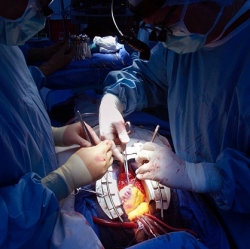
When we’ve previously heard about "organs on a chip," they’ve been miniature recreations of healthy organs. If they’re being used for research into the treatment of health problems, however, then it only makes sense that those "organs" should have something wrong with them.
With that in mind, a group of Harvard scientists have created the world’s first lab-grown sample of functioning human heart tissue that has a cardiovascular disease. The researchers started by taking skin cells from two patients afflicted with Barth syndrome, an inherited and currently-untreatable heart disorder caused by a mutation of the Tafazzin (or TAZ) gene.
Those cells were converted into stem cells, and then grown on chips that were lined with human extracellular matrix proteins. That environment mimicked conditions in the human heart, causing the cells to join together and form into heart tissue, complete with the TAZ mutations. That tissue contracted but did so quite weakly, just as the heart tissue of a Barth syndrome patient would.
The scientists noted that the mutation caused the tissue to produce excessive amounts of reactive oxygen species (ROS), which is normally released in smaller quantities by the cells’ mitochondria. By reducing the ROS production to normal levels via gene replacement therapy, however, they were able to get the diseased tissue to contract like healthy heart tissue.
